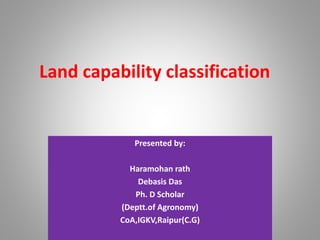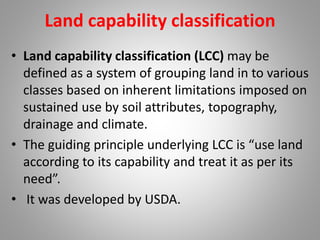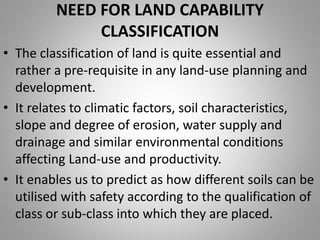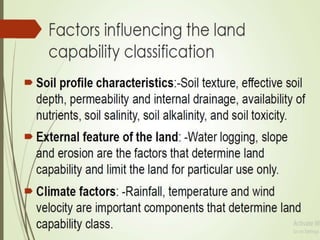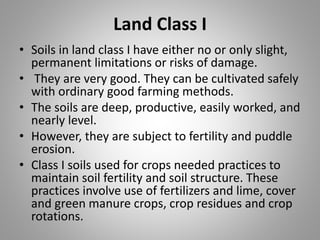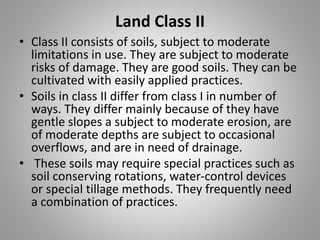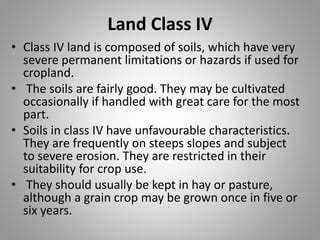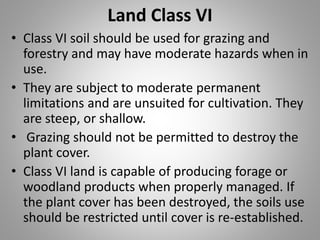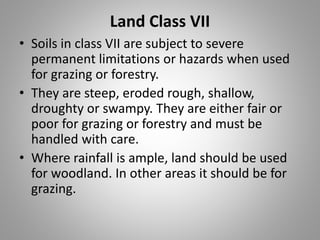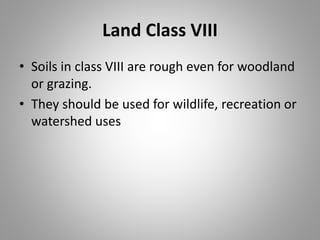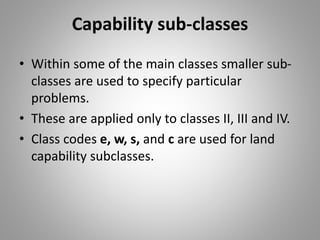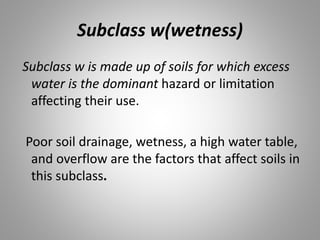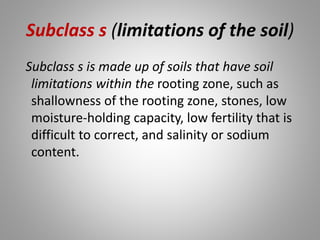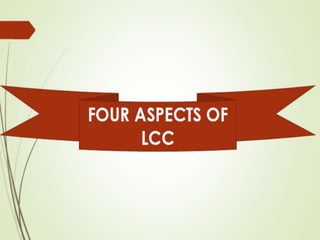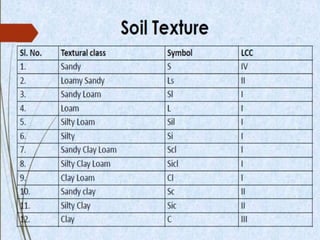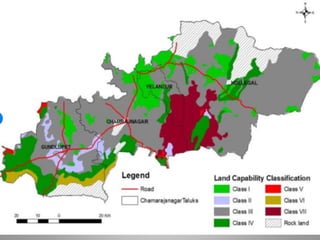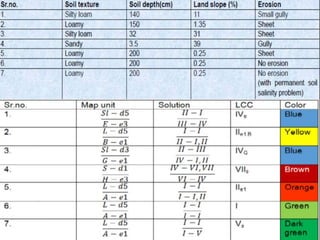The document discusses land capability classification, which groups land into classes based on inherent limitations from soil, topography, drainage and climate. It aims to guide land use according to capability. There are 8 land capability classes ranging from Class I land with few limitations to Class VIII land only suitable for wildlife or watershed use. Within classes II-IV are subclasses that further specify limitations from erosion (e), wetness (w), soil properties (s) or climate (c). The classification enables predicting safe land use and required conservation practices.
